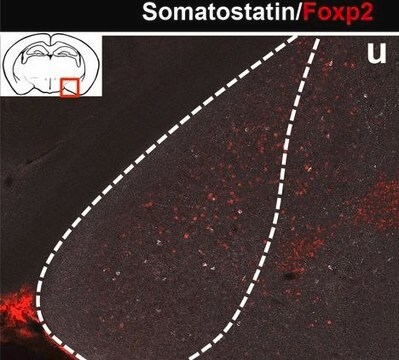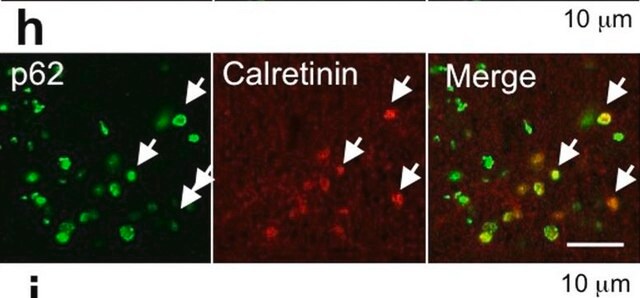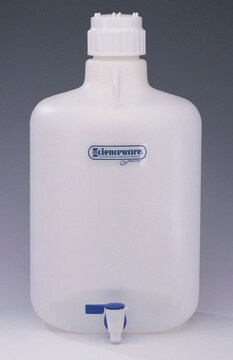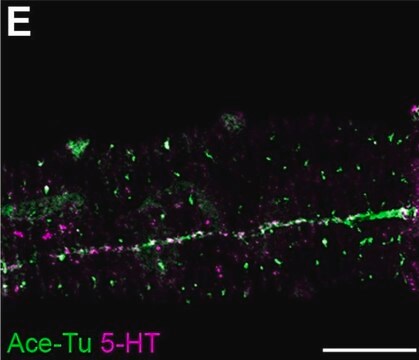General description
Cholecystokinin (CCK) belongs to gastrointestinal hormone family is a neuropeptide hormone and neurotransmitter usually present in gastrointestinal (GI) tract and the central nervous system (CNS). CCK functions include enzyme secretion from pancreas, gall bladder contraction, intestinal motility; CCK will also inhibit gastrin induced acid secretion . This product is also useful for the study of mode of action, differential tissue expression and intracellular and subcellular localization of CCK in CNS and in neuroendocrine cells of digestive system. Anti-CCK-8 reacts specifically with sulfated CCK-8 and shows cross reactivity with unsulfated CCK-8 and Big Gastrin I.
Cholecystokinin (CCK) is a neuropeptide hormone and neurotransmitter widely distributed throughout the gastrointestinal (GI) tract and the central nervous system (CNS). CCK, Big Gastrin I, and vasoactive intestinal peptide (VIP) belong to the gastrin/cholcystokinin family. hormone family. CCK has a biologically active C-terminal pentapeptide. CCK exists as a larger precursor hormone, preproCCK (114 amino acids), from which several smaller fragments are derived, sharing a C-terminal tetrapeptide and a sulfated tyrosine residue. Sulfated CCK (26-33) amide (CCK-8) is the major and the most potent CCK form in the brain and periphery. CCK is widely distributed in several brain regions, including the cerebral cortex, hippocampus, amygdala nuclei, and the hypothalamus. In the periphery, CCK is localized mainly in nerve fibers in the myenteric and submucosal ganglia, as well as in endocrine cells of the gastrointestinal tract.
Immunogen
Synthetic sulfated CCK-8 conjugated to KLH.
Application
Anti-Cholecystokinin (26-33) (CCK-8) has been used in
- immunohistochemistry
- double-label immunofluorescence staining
- immunocytochemistry
- ELISA immunoassay
Anti-cholecystokinin (26-33) (CCK-8) antibody can be used to detect CCK peptide in pancreatic cancer cells by immunocytochemistry. It may also be used for ELISA immunoassay.
Anti-cholecystokinin (26-33) (CCK-8) antibody can be used to detect CCK peptide in pancreatic cancer cells by immunocytochemistry. It may also be used for dot blot immunoassay.
Biochem/physiol Actions
Cholecystokinin (CCK) stimulates enzyme secretion from the pancreas, gall bladder contraction, and intestinal motility and it inhibits gastrin-induced acid secretion. CCK may be involved in several physiological and behavioral functions such as satiety, anxiety, memory processes, and analgesia and in disorders such as panic disorder. In the central nervous system (CNS), CCK acts as a neurotransmitter and modulates the action of other neurotransmitters such as dopamine, 5-hydroxytryptamine (5-HT), γ-Aminobutyric acid (GABA) and excitatory amino acids. The multiple biological actions of CCK are mediated by two classes of receptors, the peripheral/brain CCK-A receptors and the brain CCK-B receptors.
Disclaimer
Unless otherwise stated in our catalog or other company documentation accompanying the product(s), our products are intended for research use only and are not to be used for any other purpose, which includes but is not limited to, unauthorized commercial uses, in vitro diagnostic uses, ex vivo or in vivo therapeutic uses or any type of consumption or application to humans or animals.
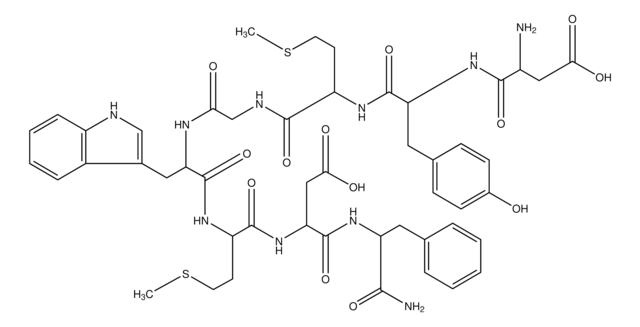
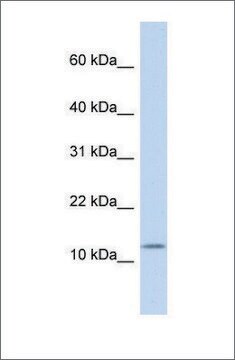
![(Tyr[SO3H]27)Cholecystokinin fragment 26-33 Amide ≥97% (HPLC), powder](/deepweb/assets/sigmaaldrich/product/structures/125/021/32eb71ec-73e5-4cfc-94d0-ebcf5e784e39/640/32eb71ec-73e5-4cfc-94d0-ebcf5e784e39.png)

